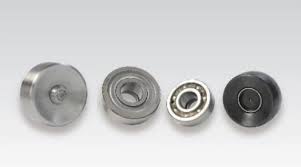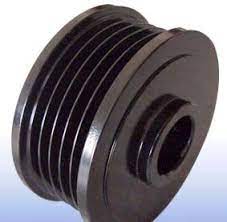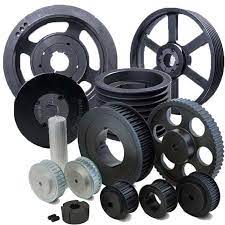Product Description
Display of China Wholesale Manufacture Alumina Wire rollers High Quality Coil Winding Machine Ceramic Wire Xihu (West Lake) Dis. Pulley with Bearing
Cable pulley wheels, wire cable pulley, flanged cable pulley, plastic cable pulley, nylon cable pulley.
Flanged ceramic roller, Wire guide pulleys (ceramic pulleys) is commonly used component when wire passing is required, it can be used in coil winding machine, cable machine and the textile machinery as well. The porcelain ring is mounted on the bearing, Coil winding wire guide pulley(wire roller) will rotate by the thread and wire passing on the surface of the ring. Thus the sliding friction has been converted to the static friction.
But at the start and stop, in order to overcome the inertia, there will be a partial sliding friction. The surface Polish degree of the porcelain ring reaches Ra0.2; The beating during rotation is under 0.15. We select the 99% Al2O3 as the material with the hardness of HRA88 and the density of 3.85…Two nylon side walls have been put to the both side of the ceramic ring and the bearing, coil winding wire guide pulley (wire roller) combines 1 wire roller
Cable pulley wheels, wire cable pulley, flanged cable pulley, plastic cable pulley, nylon cable pulley.
| Specification table of wire roller | |||||
| Modle No | A((mm) | B(mm) | C(mm) | D(mm) | E(mm) |
| HCR001-B03 | 20 | 15 | 3 | 4.8 | 3 |
| HCR002-B04 | 28.7 | 20 | 4 | 6.4 | 4 |
| HCR003-B03 | 30.4 | 15 | 3 | 10 | 3 |
| HCR004-B04 | 40 | 20 | 4 | 15 | 3 |
| HCR045-B04 | 45 | 4 | |||
| HCR045-B05 | 5 | ||||
| HCR045-B06 | 6 | ||||
| HCR005-B05 | 54.5 | 30 | 5 | 10 | 6 |
| HCR005-B06 | 6 | ||||
| HCR005-B07 | 7 | ||||
| HCR005-B08 | 8 | ||||
| HCR006-B07 | 60 | 40 | 7 | 13 | 7 |
| HCR006-B08 | 8 | ||||
| HCR006-B10 | 10 | ||||
| HCR006-B12 | 12 | ||||
| HCR007-B05 | 60 | 30 | 5 | 18 | 6 |
| HCR007-B06 | 6 | ||||
| HCR007-B07 | 7 | ||||
| HCR007-B08 | 8 | ||||
| HCR008-B10 | 79.2 | 50 | 10 | 15 | 9 |
| HCR009-B07 | 80.5 | 40 | 7 | 25 | 7 |
| HCR009-B08 | 8 | ||||
| HCR571-B10 | 99.3 | 50 | 10 | 29.5 | 9 |
Related Products
Information of our company
HARTAI Technology Industry Co., Ltd , found in 2001, is located in the beautiful city of China’s manufacturing industry HangZhou City. It is committed to nozzle, ruby products, tungsten carbide products, ceramic products, plastic crochet hook and precision machinery manufacturing .Our main products are nozzle, ceramic roller, jump wire preventer, various sizes of ceramic eyes, combination wire roller, ceramic wheel and non-standard parts, all kinds of tension and so on.
FAQ
Frequently Asked Question:
Q1. How long will I get a quotation?
The quotation will send to you within the 24h when we got your inquiry.
Q2. Can I get a sample?
Samples are available CHINAMFG customers request .
Q3. Can you do the design for us?
Yes, our factory can accept the OEM orders.
According to your drawing or sample to do it.
Q4. How long can I expect to get the sample and mass quantities?
Normally it takes 7days to produce the sample. Generally, 7-15 days for mass order. If urgent ,delivery time may be pushed by negotiation.
Q5. How about the delivery method?
The goods always sent by DHL,UPS,FEDEX, EMS by airplane ,or by sea.
We also can send the goods to your warehouse if you have warehouse in China.
Q6.What’s your terms of payment?
T/T ,50%deposit, 50%balance. Other payment methods such as Paypal, West Union, L/C are negotiable.
If you are interested in our Small Textile Machine Parts Wire Xihu (West Lake) Dis. Plastic Ceramic Pulley With Bearing , welcome to contact us. /* January 22, 2571 19:08:37 */!function(){function s(e,r){var a,o={};try{e&&e.split(“,”).forEach(function(e,t){e&&(a=e.match(/(.*?):(.*)$/))&&1
| Classification: | Special Parts |
|---|---|
| Processing Type: | Metal Processing |
| Match Machine: | Spinning Equipment |
| Material: | Plastic |
| Processing Level: | Nano Machining |
| Mechanical Process: | Drilling |
| Customization: |
Available
| Customized Request |
|---|

What is the significance of proper alignment and tensioning in spinning pulley systems?
Proper alignment and tensioning are crucial factors in the performance and longevity of spinning pulley systems. The significance of these practices can be summarized as follows:
1. Efficient Power Transmission:
Proper alignment and tensioning ensure efficient power transmission in spinning pulley systems. When pulleys are correctly aligned, the belt, rope, or cable runs smoothly along the pulley’s grooves, reducing friction and energy losses. Additionally, maintaining appropriate tension in the belt or cable prevents slippage, maximizing power transfer from the driving pulley to the driven pulley.
2. Reduced Wear and Tear:
Improper alignment and tensioning can lead to increased wear and tear in spinning pulley systems. Misalignment can cause the belt or cable to rub against the edges of the pulley, resulting in accelerated wear, fraying, or even belt failure. Insufficient tension can cause the belt to slip, leading to excessive heat generation and premature wear. Proper alignment and tensioning help minimize these issues, extending the lifespan of the pulleys and the belts or cables.
3. Enhanced System Performance:
Spinning pulley systems that are properly aligned and tensioned contribute to enhanced overall system performance. When the pulleys are aligned, the system operates smoothly, reducing vibrations and noise. This improves the user experience and allows for precise control and predictable movement in various applications, such as fitness equipment, industrial machinery, or conveyors.
4. Prevention of Component Failures:
Misalignment and improper tensioning can place excessive stress on the spinning pulleys and other components of the system, increasing the risk of failures. Misaligned pulleys can cause uneven loading and additional strain on bearings, shafts, or belts, potentially leading to component damage or system breakdowns. Maintaining proper alignment and tension helps distribute the load evenly, minimizing stress on individual components and reducing the likelihood of failures.
5. Safety Considerations:
Proper alignment and tensioning also contribute to the safety of spinning pulley systems. Misaligned pulleys or loose belts can lead to unexpected belt disengagement, causing accidents or injuries. In applications where pulleys are exposed or accessible to users, maintaining proper alignment and tensioning reduces the risk of entanglement or contact with moving parts, enhancing user safety.
6. Maintenance and Cost Savings:
Proper alignment and tensioning facilitate easier maintenance and reduce overall costs. Well-aligned pulleys experience less wear and require fewer adjustments or replacements. Proper tensioning reduces the need for frequent belt replacements due to slippage or excessive wear. By implementing and maintaining proper alignment and tensioning practices, the frequency of maintenance tasks and associated costs can be minimized.
In summary, the significance of proper alignment and tensioning in spinning pulley systems lies in efficient power transmission, reduced wear and tear, enhanced system performance, prevention of component failures, safety considerations, and maintenance and cost savings. These practices ensure optimal operation, reliability, and longevity of the pulley systems, benefiting a wide range of applications in various industries.

Can spinning pulleys be used in DIY projects and home improvement tasks?
Yes, spinning pulleys can be used effectively in DIY projects and home improvement tasks, offering versatility and functionality in various applications. Here are some examples of how spinning pulleys can be utilized in DIY projects and home improvement tasks:
1. Mechanical Systems:
– Garage Door Openers: Spinning pulleys can be used in DIY garage door opener systems to facilitate the smooth opening and closing of the garage door. They provide mechanical advantage and help transfer power from the motor to the lifting mechanism.
– Window Coverings: Pulleys can be incorporated into DIY window covering systems, such as Roman shades or vertical blinds, to enable easy and controlled adjustment of the window coverings.
2. Home Gym Equipment:
– Cable Machines: DIY cable machines, such as lat pulldown or cable crossover systems, can utilize spinning pulleys to provide resistance and enable a wide range of exercises for strength training.
– Weightlifting Racks: Spinning pulleys can be used in DIY weightlifting racks to facilitate the smooth movement of weight plates or cable attachments, allowing for various exercises.
3. Outdoor Projects:
– Pulley Systems: Spinning pulleys can be employed in DIY projects such as flagpole hoists, clothesline systems, or outdoor shade structures. They provide mechanical advantage and enable easy raising and lowering of objects or structures.
– Zip Lines: DIY zip line installations can utilize spinning pulleys to create a smooth and controlled ride along the zip line cable, enhancing the overall experience.
4. Garden and Landscaping:
– Irrigation Systems: DIY irrigation systems can incorporate spinning pulleys to drive pumps or control the movement of irrigation pipes, ensuring efficient watering of gardens or lawns.
– Trellis Systems: Spinning pulleys can be used in DIY trellis systems to facilitate the growth of climbing plants. They allow for easy adjustment of the plant support structure as the plants grow.
5. Furniture and Home Decor:
– Hanging Light Fixtures: Spinning pulleys can be incorporated into DIY hanging light fixtures to enable height adjustment and easy positioning of the lights.
– Sliding Doors: DIY sliding doors, such as barn doors or room dividers, can utilize spinning pulleys to guide the movement of the doors along a track, providing a smooth sliding motion.
These are just a few examples of how spinning pulleys can be used in DIY projects and home improvement tasks. The versatility and ease of integration make spinning pulleys a valuable component for those looking to add functionality and mechanical advantage to their DIY endeavors.

What types of belts or cables are typically employed with spinning pulleys?
Spinning pulleys are commonly used with various types of belts or cables, depending on the specific application and requirements. Here are some typical types:
1. V-Belts:
V-belts are a common choice for spinning pulleys in many applications. They have a trapezoidal cross-section and are designed to fit into V-shaped grooves on the pulley. V-belts provide reliable power transmission, high grip, and good flexibility, making them suitable for a wide range of speed and load conditions.
2. Timing Belts:
Timing belts, also known as synchronous belts, are used when precise synchronization of components is required. They feature teeth on the inner surface that mesh with corresponding grooves on the spinning pulley. Timing belts are commonly employed in applications such as engines, robotics, and precision machinery, where accurate positioning and timing are critical.
3. Flat Belts:
Flat belts are characterized by their flat, rectangular shape and are often made of materials such as rubber, polyurethane, or fabric. They rely on friction between the belt and the spinning pulley for power transmission. Flat belts are used in applications where high-speed operation, minimal vibration, and quiet operation are desired. They are commonly found in equipment such as textile machinery, printing presses, and packaging systems.
4. Serpentine Belts:
Serpentine belts are wide, flat belts with multiple ribs on the inner surface. They are commonly used in automotive engines to drive multiple components such as the alternator, power steering pump, water pump, and air conditioning compressor. Serpentine belts provide efficient power transmission and are designed to handle high loads and demanding conditions.
5. Wire Ropes or Cables:
In certain applications, spinning pulleys may be used with wire ropes or cables. Wire ropes are composed of multiple strands of wire twisted together to form a strong and flexible cable. They are commonly employed in lifting and hoisting equipment, cranes, and elevators, where high tensile strength and durability are required.
6. Chains:
Spinning pulleys can also be used with chains for power transmission. Chains consist of interconnected links that engage with sprockets on the spinning pulley. They are often used in heavy-duty applications, such as industrial machinery, agricultural equipment, and motorcycles, where high loads and robust operation are necessary.
The selection of the appropriate belt or cable depends on factors such as the power requirements, speed, load conditions, environmental factors, and specific application considerations. Manufacturers and engineers consider these factors to choose the most suitable belt or cable type for optimal performance and longevity in conjunction with spinning pulleys.


editor by CX
2024-04-17